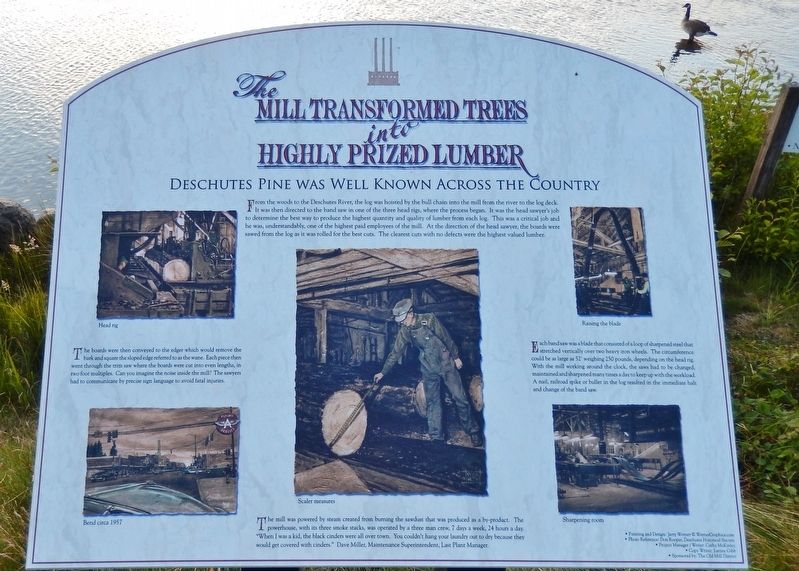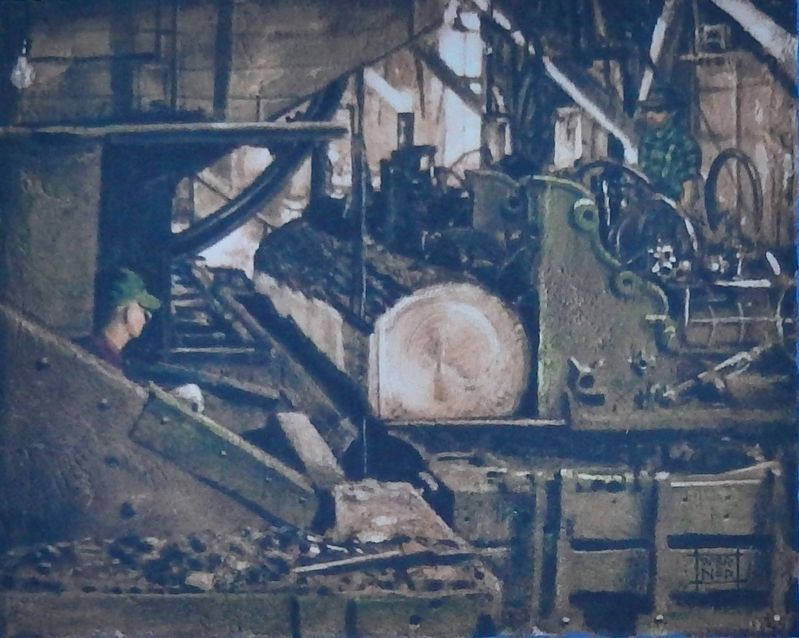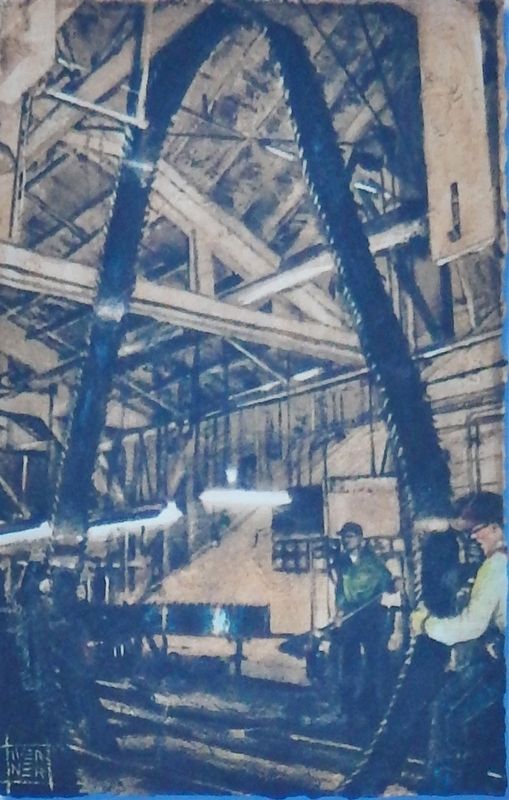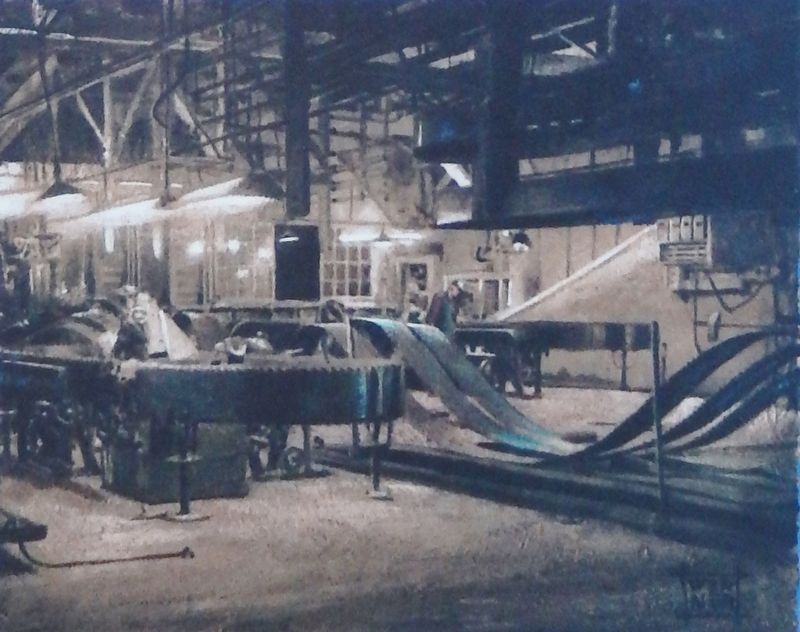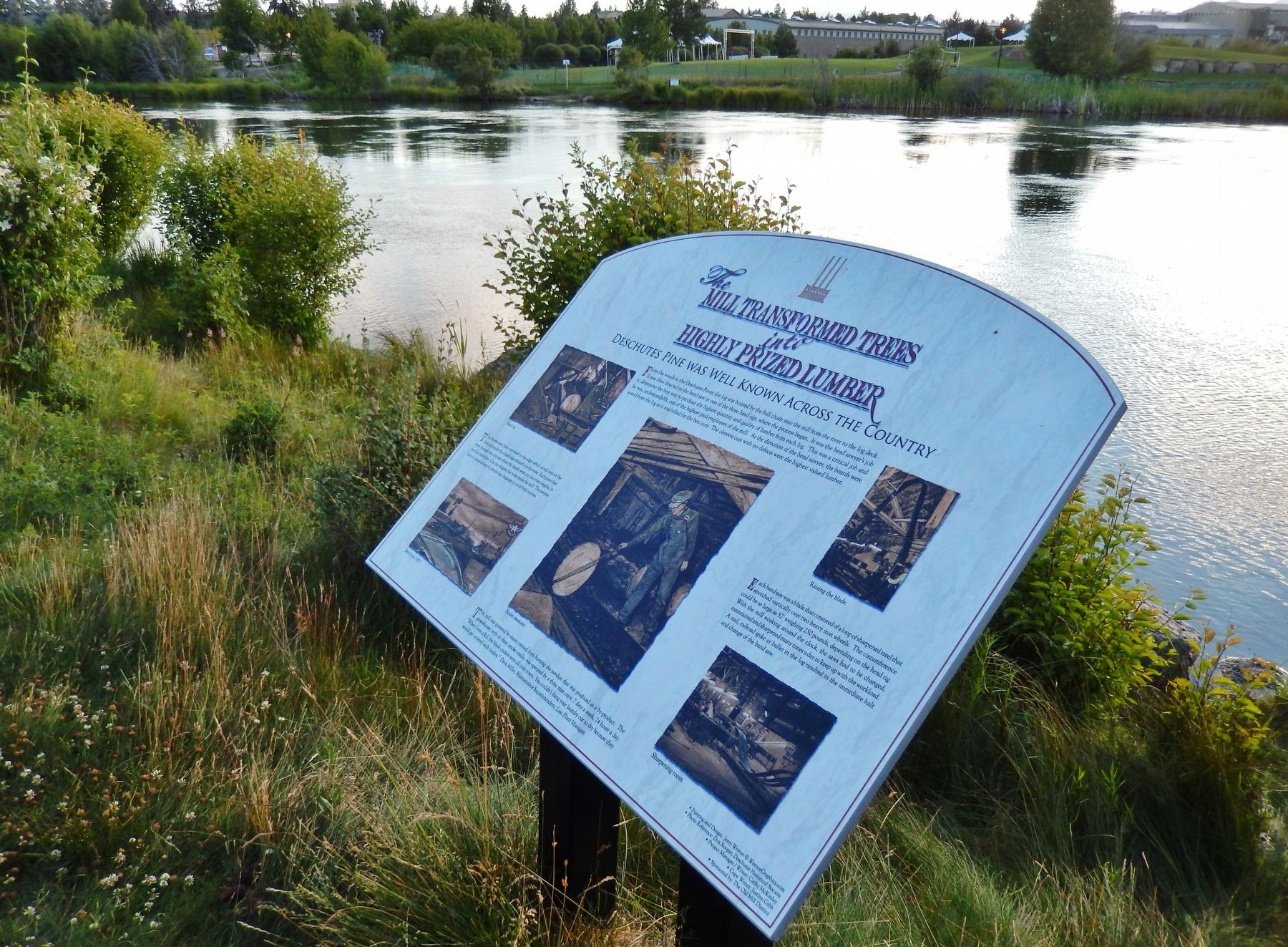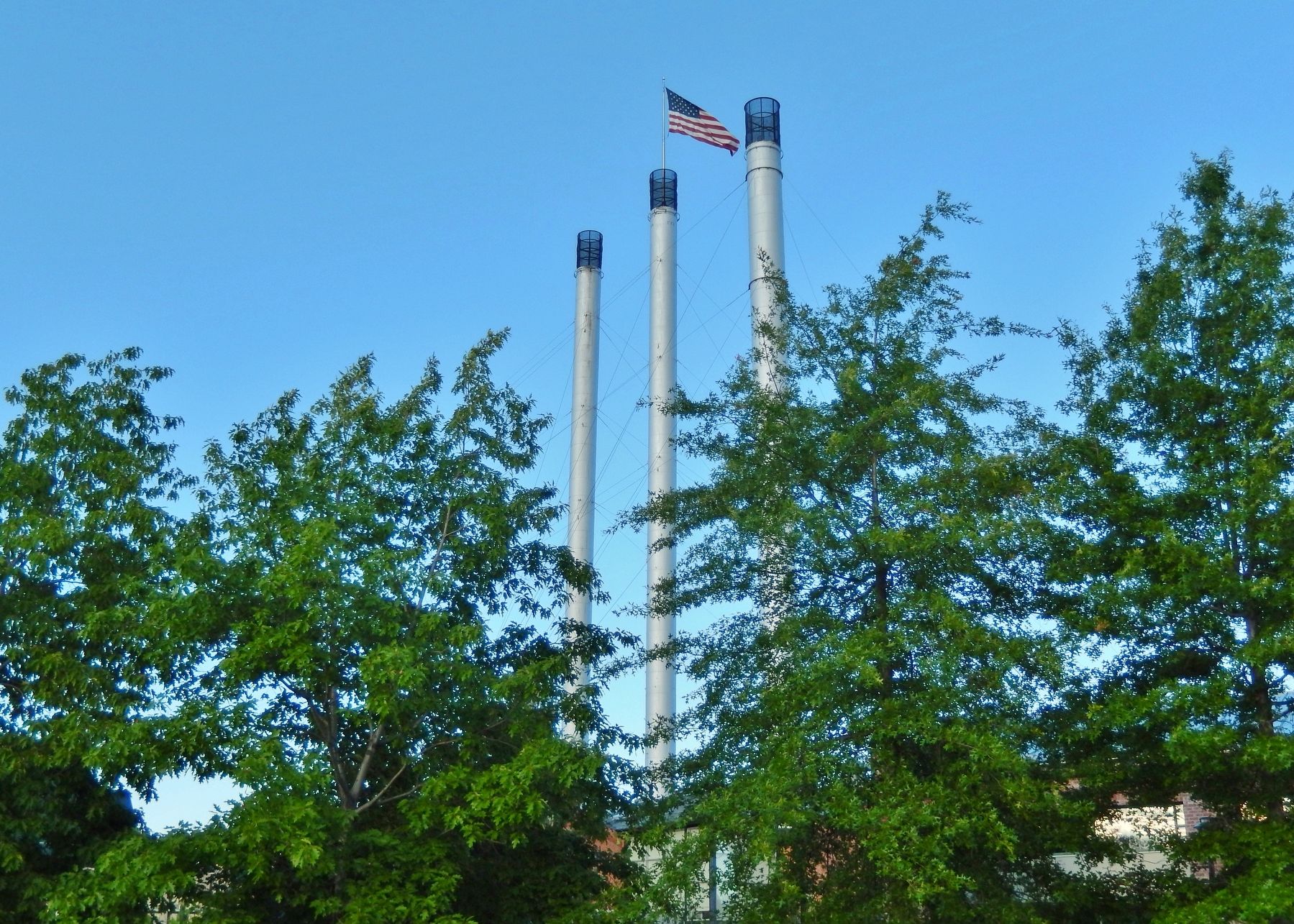Bend in Deschutes County, Oregon — The American West (Northwest)
The Mill Transformed Trees into Highly Prized Lumber
Deschutes Pine Was Well Known Across The Country
Inscription.
From the woods to the Deschutes River, the log was hoisted by the bull chain into the mill from the river to the log deck. It was then directed to the band saw in one of the three head rigs, where the process began. It was the head sawyer's job to determine the best way to produce the highest quantity and quality of lumber from each log. This was a critical job and he was, understandably, one of the highest paid employees of the mill. At the direction of the head sawyer, the boards were sawed from the log as it was rolled for the best cuts. The clearest cuts with no defects were the highest valued lumber.
The boards were then conveyed to the edger which would remove the bark and square the sloped edge referred to as the wane. Each piece then went through the trim saw where the boards were cut into even lengths, in two foot multiples. Can you imagine the noise inside the mill? The sawyers had to communicate by precise sign language to avoid fatal injuries.
The mill was powered by steam created from burning the sawdust that was produced as a by-product. The powerhouse, with its three smoke stacks, was operated by a three man crew, 7 days a week, 24 hours a day. "When I was a kid, the black cinders were all over town. You couldn't hang your laundry out to dry because they would get covered with cinders." Dave Miller, Maintenance Superintendent, Last Plant Manager.
Each band saw was a blade that consisted of a loop of sharpened steel that stretched vertically over two heavy iron wheels. The circumference could be as large as 52' weighing 250 pounds, depending on the head rig. With the mill working around the clock, the saws had to be changed, maintained and sharpened many times a day to keep up with the workload. A nail, railroad spike or bullet in the log resulted in the immediate halt and change of the band saw.
Erected by The Old Mill District.
Topics. This historical marker is listed in these topic lists: Horticulture & Forestry • Industry & Commerce • Man-Made Features • Notable Places.
Location. 44° 2.787′ N, 121° 18.972′ W. Marker is in Bend, Oregon, in Deschutes County. Marker can be reached from SW Powerhouse Drive north of SW Columbia Street when traveling west. Marker is located along the Deschutes River walkway, on the east side of the river, in Bend's Old Mill District. Touch for map. Marker is at or near this postal address: 395 SW Powerhouse Drive, Bend OR 97702, United States of America. Touch for directions.
Other nearby markers. At least 8 other markers are within walking distance of this marker. Logs Finally Become Lumber (within shouting distance of this marker); Thank Goodness for Water and Gravity (within shouting distance of this marker); Today's Old Mill District (about 500 feet away, measured in a direct line); Location, Location & Location (about 500 feet away); Journey of the Log to Lumber (about 700 feet away); Home of Kathleen "Klondike Kate" Rockwell (approx. 0.7 miles away); "Klondike Kate" House (approx. 0.7 miles away); Old Bulletin Building (approx. 0.8 miles away). Touch for a list and map of all markers in Bend.
Related markers. Click here for a list of markers that are related to this marker. Old Mill District
Also see . . . Deschutes County History.
By 1915 two large companies, Shelvin-Hixon and Brooks-Scanlon, announced plans to build lumber mills just south of downtown Bend. By the mid 1920s, the lumber capacity combined for both mills was one of the largest white pine lumber mills in the world. By 1924, Shelvin-Hixon alone was cutting 200 million board feet a year. The arrival of the lumber mills brought a large economic boom and rapid expansion of the county’s population. In 1916, when the county was formed, the population was just 5,000 people. By 1920 it grew to 9,622, almost doubling in size in just four short years. (Submitted on February 9, 2018, by Cosmos Mariner of Cape Canaveral, Florida.)
Credits. This page was last revised on October 14, 2020. It was originally submitted on February 9, 2018, by Cosmos Mariner of Cape Canaveral, Florida. This page has been viewed 156 times since then and 11 times this year. Photos: 1, 2, 3, 4, 5, 6. submitted on February 9, 2018, by Cosmos Mariner of Cape Canaveral, Florida. • Andrew Ruppenstein was the editor who published this page.
